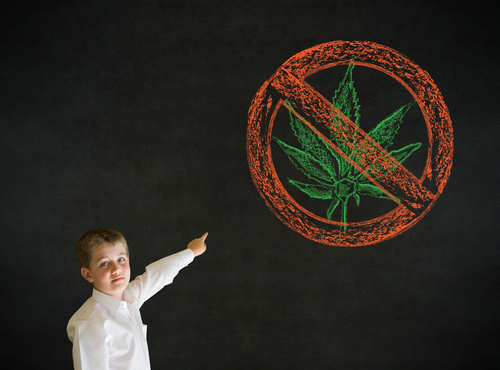Posted on December 11, 2020 View all news
Dec 10, 2020
I’ve likened the move to legalize marijuana in Virginia to a runaway train — full of momentum and tough to stop. One reason for this is that the passengers on the train — legalization proponents — have no interest in stopping it. In fact, they seem to consider anyone who suggests slowing the train long enough to consider the destination a hopelessly antediluvian killjoy.
In recent days the administration of Gov. Ralph Northam has laid groundwork for legalization after “robust data collection, new regulation, and public education.” Meanwhile, the House of Representatives voted to decriminalize pot on the federal level, while of course taxing the sale of the product. Proponents hail these developments as part of inevitable progress toward legalization, and they may well be right. But that doesn’t mean it’s automatically a good idea. There are many, many reasons to consider slowing down this train before unintended consequences begin to pile up alongside the track.
For an alternative perspective on the legalization debate, I often refer to the work of a Virginia-based organization called Smart Approaches to Marijuana.
SAM calls itself “an alliance of organizations and individuals dedicated to a health-first approach to marijuana policy.” Unlike many proponents, who seem to think there can only be one reasonable side to this issue, SAM considers broad scientific evidence and social policy ramifications. That doesn’t necessarily make them right about everything, but it makes their positions worth consideration instead of instant dismissal.
In a persuasive and well-documented study called “Lessons Learned from State Marijuana Legalization” (found here: https://learnaboutsam.org/wp-content/uploads/2020/12/2020-Impact-Report1.pdf , SAM highlights several underappreciated risks of widespread marijuana use in states where legalization has already happened. Among its findings:
Today’s marijuana is not yesterday’s. Not only is cannabis today more potent than in previous years, but frequency of use has increased. “The change in marijuana potency today (daily users) versus 20 years ago (average weekend user) is akin to the caffeine change from one 20 oz cola a day, to thirty-three 16 oz cappuccinos a day.”
Marijuana derivatives like concentrates and edibles, even when legally sold, often misrepresent the actual ingredients in those products. “Unsuspecting consumers often have no idea what exactly they are smoking or ingesting.”
Marijuana production is notoriously bad for the environment. “The indoor cultivation of one kilogram of marijuana requires 5.2 megawatt hours of electricity and releases 4.5 metric tons of carbon dioxide emissions.”
Far from being a harmless recreation, marijuana use is linked to major health risks, both physical and mental. “Studies found marijuana use can cause severe consequences for mental health. Marijuana is increasingly linked to the onset of psychosis and schizophrenia.” Depression and anxiety are also linked, not to mention the tendency of heavy pot users to become virtually unemployable.
Marijuana use has been linked to increased incidences of hypertension, myocardial infarction, cardiomyopathy, arrhythmias, stroke, cardiac arrest and certain types of cancer. While the deleterious effects of pot on pregnant women and their babies are well documented and widely known, use of marijuana among pregnant women has increased with the wave of legalization.
Marijuana is an addictive substance which can easily transition users into use of stronger drugs (regardless of the common rejection of the idea of pot as a “gateway drug”). “Marijuana exposure in adolescence in particular seems to impact future opioid use,” one study concluded.
While proponents suggest marijuana is a harmless recreation, there have been marked increases in hospitalizations and calls to poison control centers related to pot use in states where legalization has occurred. In Washington, Colorado and Massachusetts, that increase has been 103%, 112% and 140% respectively. We could add to this the sharply increased rate of traffic accidents and fatalities related to marijuana use in states where it is legally sold to see a public health crisis in the making.
Some hold decriminalization to be a step toward “social justice,” easing racial tensions and injustices. However, studies indicate that “disparities in use and criminal offense rates have persisted in states that legalized marijuana.” Marijuana dispensaries, much like the oft-castigated payday loan brokers, are often located in proximity to vulnerable communities.
I admit that proponents of legalizing pot in Virginia make some compelling arguments. But they tend to dismiss any evidence that counters their view. Last year when I addressed this issue in this space, I concluded with an analogy: “Many years ago the American legal system erected a fence around marijuana use. It’s always a good idea, when tearing down a fence, to stop and consider why it was built in the first place.”
Long is a historian, writer and educator from Salem.

